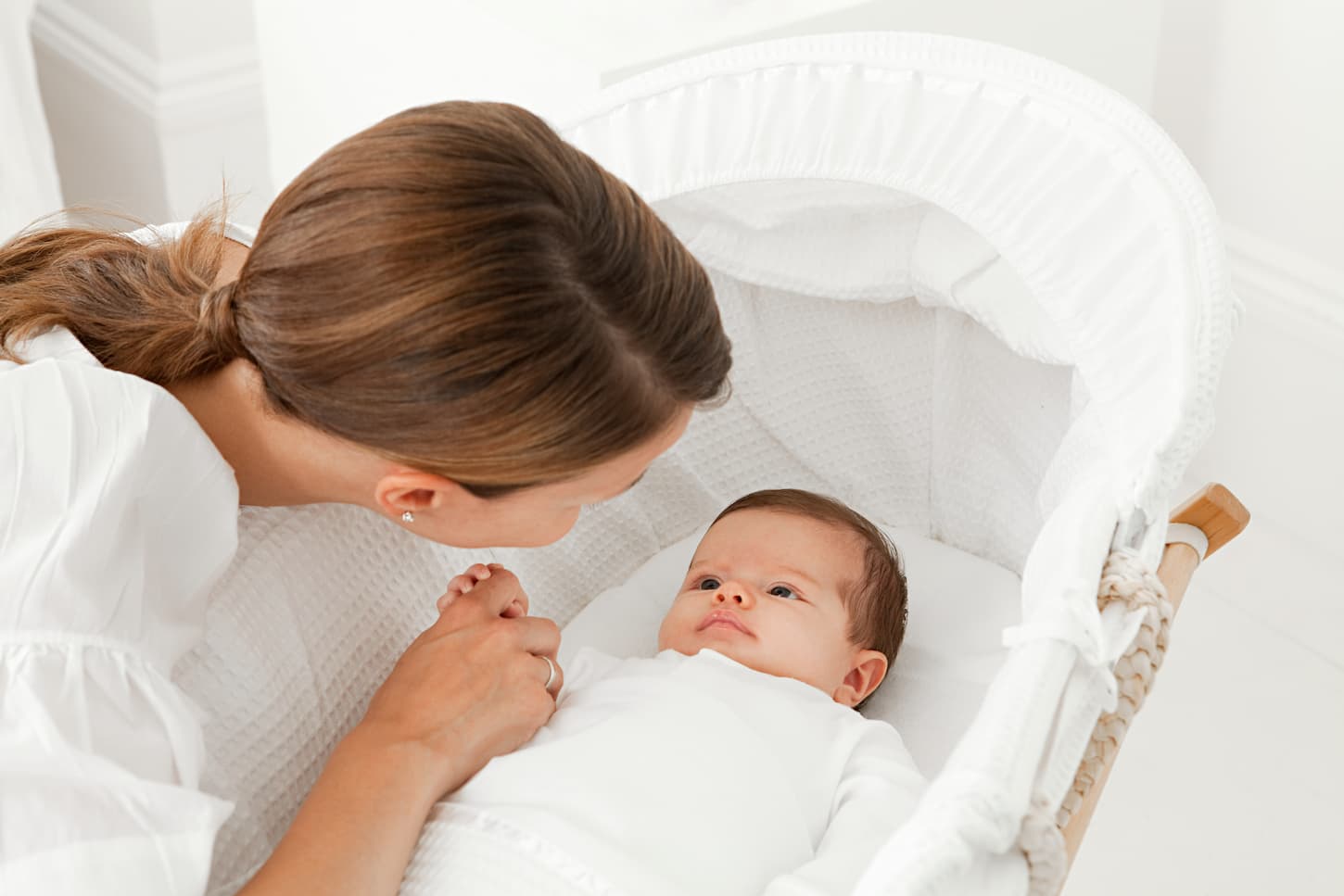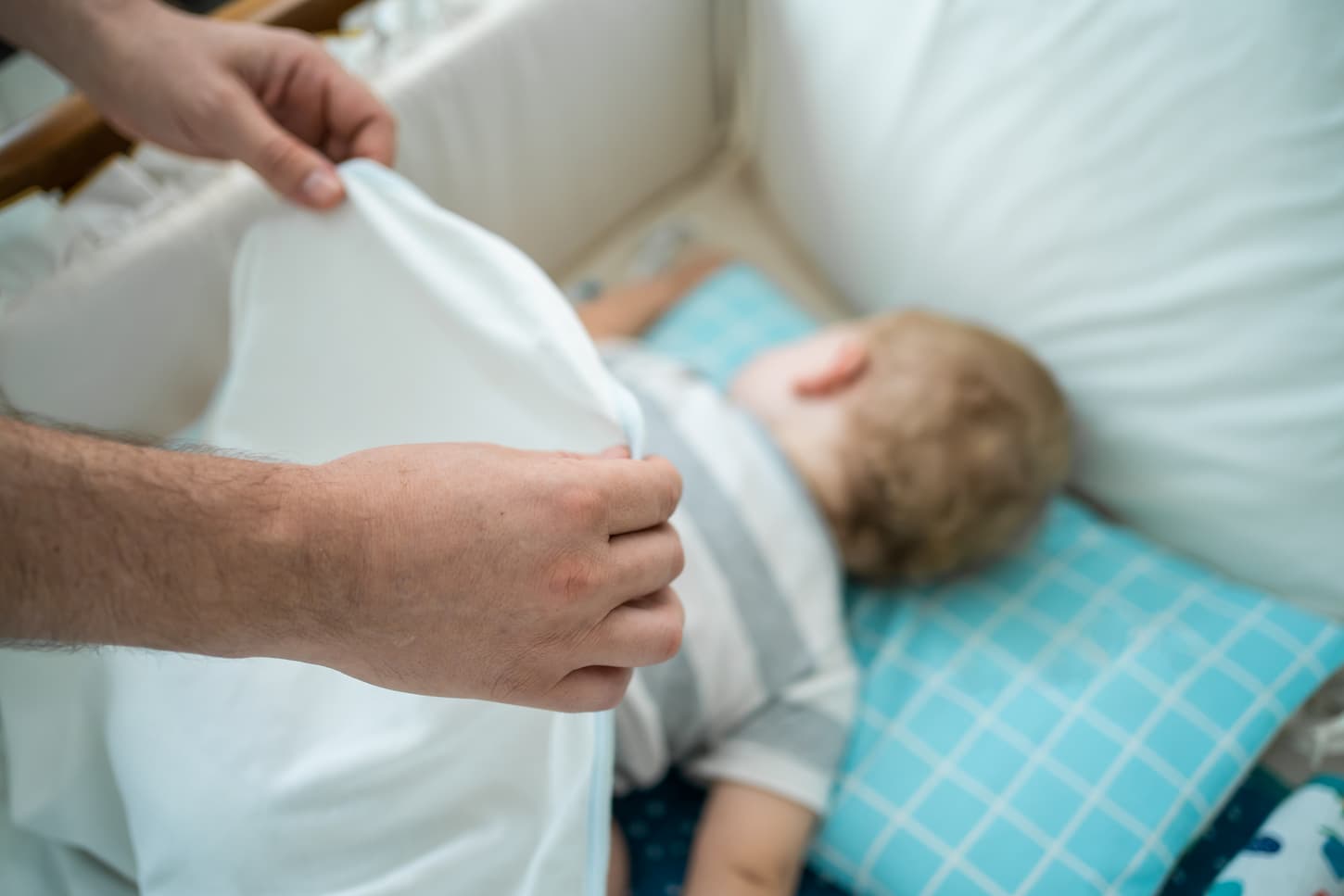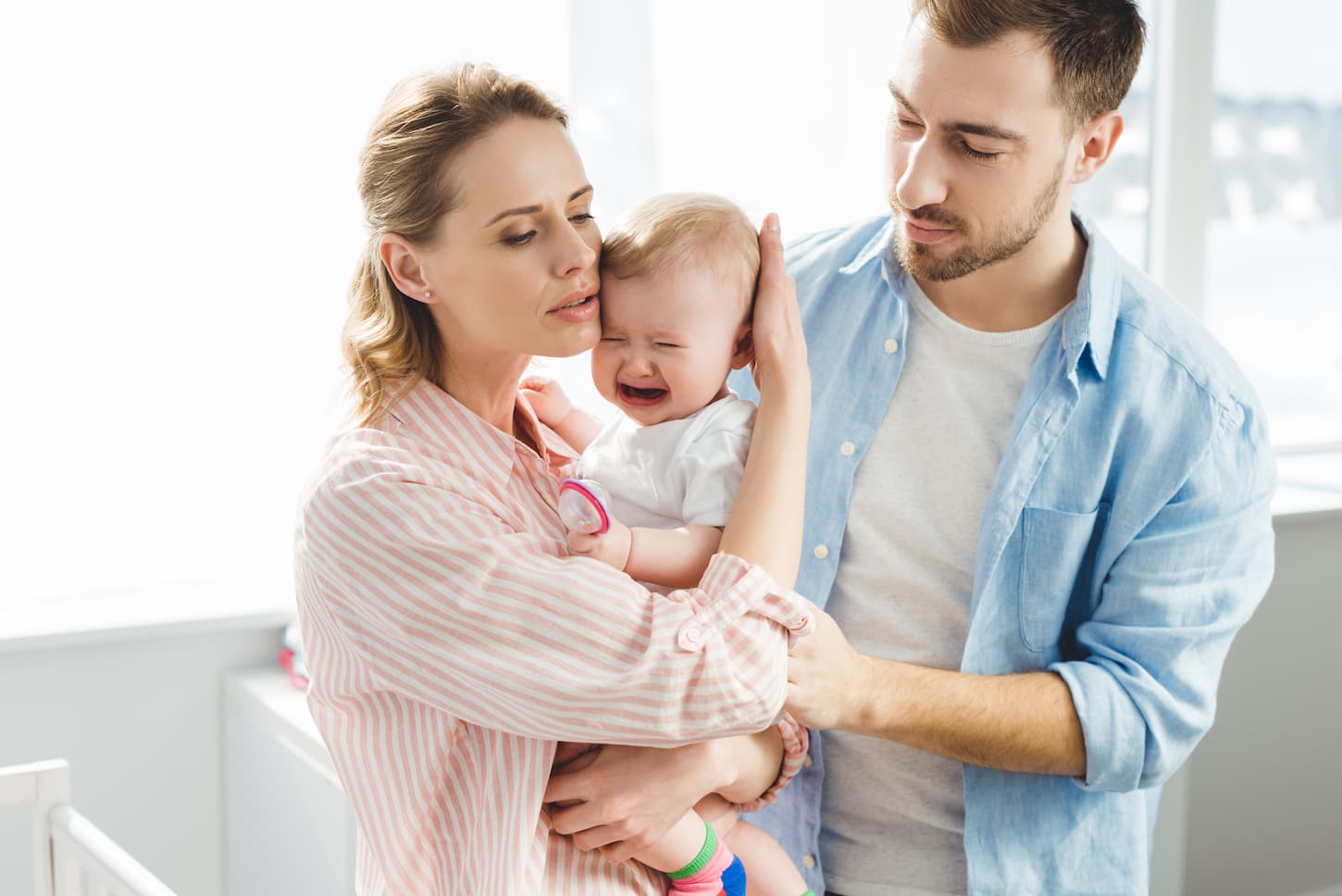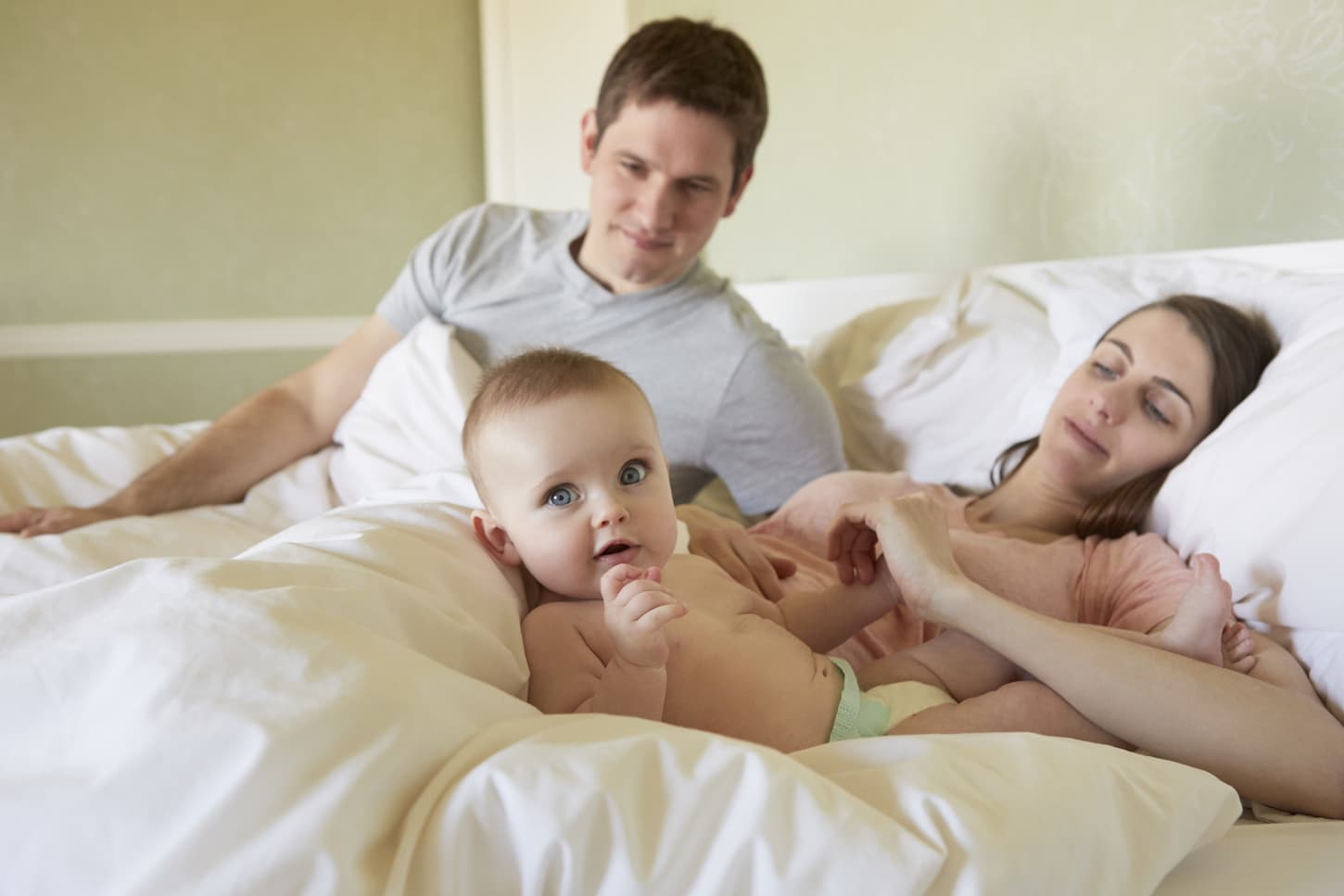Being a parent is one of the most rewarding yet challenging experiences out there. Of course, every parent’s experience with their baby is different, but every parent has a tough time trying to put their baby to sleep. At a certain point, it gets tiring to do.
A baby may be able to sleep on their own, or parents can implement sleep training techniques to try to speed up the process. Sleep training a baby is not harmful if done correctly and at the proper age for the child.
Here are a few useful tips on getting a baby to sleep on their own so parents can have a restful sleep, too.

How Do You Teach a Baby to Fall Asleep on Its Own?
To help babies sleep independently, help them feel safe in their sleeping area and lay them down when they are calm, sleepy, but still awake. For babies who need more help, there are dozens of sleep training methods available that parents can use as a resource.
Babies are naturally great sleepers, though they’re not all at the same level.
- Some are great at sleeping in a bed or anywhere they may be, like a stroller.
- Many other babies seem to sleep well enough if they’re in a stroller or car seat but not so well in their bed.
- Others seem to have the instinct to only sleep in their parent’s arms (because that’s where they feel the safest). However, once they feel those arms are gone, they may panic and start to cry.
Therefore, the baby needs to learn to feel safe in their bed to sleep alone.
Parents can gently put their babies in the crib when they are about to fall asleep. The baby may complain (cry or fuss), so parents should just sit beside them instead of rushing to pick them up.
Eventually, the baby will fall asleep once they calm down again. This allows them to associate the bed with a safe place to fall asleep.
If the baby is too fussy, a parent can touch or softly talk to their baby to calm them down. As long as they don’t pick them up, they will slowly grow independent from the need to be in a parent’s arms.
Parents can hold their baby’s hand and eventually replace it with some toys to calm them down.
Is your baby too reliant on sleeping in your arms? Read this article we wrote: 8 Steps to Break the Habit of Baby Sleeping in Arms. It’s full of helpful ideas and tips!
How Do You Teach a Baby to Fall Asleep on Its Own Without Crying?
A baby can be taught to fall asleep on their own without any crying being required. This can be done over time or by implementing a tears-free sleep training technique or methodology.
Many parents aren’t comfortable with the usual sleep training methods since it involves a lot of crying, especially on the baby’s part. However, several methods are gentler, such as the pick-up and put-down method, the chair method, and scheduled awakenings.
We’ll walk through some of the standard gentle sleep training methods that have worked for parents.
First, we have the pick-up and put-down method, which involves picking up the baby when they start to cry. The steps are similar to the first one we mentioned in this article.
However, in this method, parents are allowed to pick up their babies. Then, once the baby is calm enough, they can be put back in their crib to sleep.
Next is the chair method. When the baby is drowsy, put them down in their crib and sit nearby. This lets them know that we’re here so they will feel safe falling asleep.
Parents aren’t allowed to pick the baby up, but they can pat them or give them comforting words to help them sleep.
If the baby wakes up at midnight and cries, don’t pick them up. Instead, sit in the same spot as before, pat them to comfort them, and tell them you’re here. Slowly move farther away from the crib each time so they’ll get used to sleeping alone.
Lastly, there are scheduled awakenings. This method involves interrupting the baby’s sleep and teaching them when to wake up.
Wake them up gently at the same time continuously, and then put them back to sleep. This allows the parent to have set intervals of rest. However, this method might be stressful for both parents and the baby.
The key thing is to be consistent with our methods. Slowly, they’ll eventually learn how to sleep on their own. Some babies sleep without a fuss right away, while others take longer.
Want to know more about sleep training methods that come with less stress? Try this method: No-Cry Sleep Training (a Complete Beginner’s Guide).

How Long Does It Take to Teach a Baby to Fall Asleep on Their Own?
Every baby is different when it comes to sleep training. Some learn to put themselves to sleep as early as seven days into the routine, while others may take months. Some babies never really pick up sleep training and start falling asleep by themselves when they are the proper age.
Parents should try sleep training their kids for a couple of months before deciding to throw in the towel. However, if the parents and their baby are stressed and tired, it’s also okay to stop sleep training. Stopping can be temporary, permanent, or on a “we’ll see” basis.
There is no need to worry because babies will eventually learn to sleep alone. We just have to hang in there.
Why Can’t Every Baby Fall Asleep on Their Own?
Babies learn how to sleep on their own eventually. Some take longer than others. Some infants might not do well with sleep training. If this is the case, wait until the baby is old enough (or just older) to learn how to sleep independently.
If your baby isn’t doing well with sleep training, please read this article: Does Sleep Training Ever Not Work? We want you to know you aren’t alone – and that it’s okay!
When Do Babies Learn to Fall Asleep on Their Own?
Most babies are ready to start sleep training as early as four months. However, this doesn’t mean they’ll learn to fall asleep immediately. Some babies can fall asleep within a week of sleep training, while others may start falling asleep on their own by twelve or fourteen months.
Before sleep training, be sure to consult your baby’s doctor.
Here’s the quick version of our story, across four babies who were horrible sleepers.
We used various sleep training methods with each of our children. We used some version of a cry-it-out method at about 6 to 8 months because we were desperate for sleep. It helped, but it didn’t permanently solve the problem.
We then mixed in some gentler methods to extend their sleep time so that we could keep catching up on our sleep. It helped.
But do you know what helped the most? Time.
All of our children started sleeping better by about 12 to 14 months of age, or after they completely weaned. It was like some light switch got flipped, and they did magically so much better.
Some babies do well at four to six months
Some babies will sleep well before or by about 4 to 6 months of age. Other babies will sleep train at this age with little difficulty.
If the pediatrician gives a go signal to start sleep training at four months, parents can try the gentle sleep training methods we have listed above. Some pediatricians might suggest other ways, so be sure to listen to what they say and consider it.
Usually, babies who are ready to be sleep trained at about four to six months of age manage to pick up the routine well and will be able to follow it.
However, there are cases when a child’s health care provider will give the go signal for sleep training, but the baby can’t seem to pick up the routine. Again, this is normal and not a cause of panic.
Some kids take longer than others, and we must be patient with them. They’ll get the hang of sleep training soon.
Want to know more about if your baby’s ready for sleep training? Read this article we wrote: 4 Month Milestones to Know Before Sleep Training.
Some babies don’t figure it out until around 12 to 14 months old
Most babies will start sleeping better on their own by about 12 to 14 months of age or when they wean. Time, patience, and solid bedtime routines will help all babies become better sleepers.
Before we jump into sleep training our infants, we should consult our babies’ pediatrician first. Some babies aren’t ready to start sleep training until they are a little older.
Some babies don’t fall asleep as fast as others when they start sleep training. Some babies take up to twelve or even fourteen months until they can sleep independently.
Be consistent and follow a routine, even if it takes the baby a little longer. Not all babies are born equal; some pick up on things a little later than others. Babies need to feel secure and should be reassured constantly.
Parents should consult with a pediatrician to see if they can continue sleep training or if they should stop. If parents and the baby are stressed, they should trust their instincts and do what they feel is right.
Pediatricians may also suggest other methods. Before completely stopping sleep training, exploring sleep training methods suitable for both parents and the baby might be a good idea.
Remember: as parents, we must also stay healthy to look after our little ones.

Is Sleep Training Harmful?
Sleep Training isn’t harmful to a baby long-term as long as parents respond to their baby’s needs and follow any instructions from the pediatrician. Studies have shown that almost any form of sleep training won’t cause any long-term damage or affect the relationship between parent and child.
If parents want to be completely safe while sleep training, they should ask the pediatrician if it’s possible to start at four months. The pediatrician can decide if that’s the right age for the baby and whether it’s a good idea to start now or later.
According to some studies, sleep training a baby improves both the baby’s and the parent’s sleep quality and also improves the relationship between parents and their child. It also helps the baby grow independent and get used to being able to do things on their own.
Why is sleep training recommended?
Sleep training is usually recommended to teach a baby how to be independent sleepers and give the parents a decent amount of sleep. Being a parent usually includes sleepless nights till the child matures and adapts to a consistent sleeping schedule.
Perhaps a different strategy is needed if we’ve been sleep training our baby for over two weeks. Be sure to check in with the baby’s pediatrician regularly and consider their advice.
They might want us to continue our current routine, change strategies, or halt sleep training.
Is the “Cry it Out” Method Also Effective?
The cry-it-out (CIO) method is one of the quickest methods to use for sleep training as the baby can quickly figure out that they no longer need their parent to put them to sleep. The key is to get the baby drowsy before bedtime and lay them down in their crib while they are still awake but sleepy.
Sleep training is constantly confused for this specific method only. While some parents aren’t comfortable leaving their baby to cry themselves to sleep, it’s safe if done properly.
Doing this usually will cause the baby to cry, but it’s very important to control ourselves and not pick the baby up to comfort them. This is usually hard for a parent since it’s natural for them to want to comfort their child.
If parents can’t handle leaving their child to cry, they can do the Ferber Method, where they can check up on the baby and offer comforting words and touches without picking the baby up. However, parents shouldn’t linger too long.
When we decide on this method, we must be sure that the entire household is on this because consistency is a factor in success.
For example, grandparents or partners might pick up the baby while parents are sleep training them. So, let every household member know what the plans are.
For more about the CIO method, read this article: How Long Do You Let a Baby Cry It Out? (25 Things To Know).

Is it Okay for the Baby to Sleep in the Family Bed?
While some parents say it is completely safe, several doctors who are part of the American Academy of Pediatricians and Centers for Disease Control and Prevention do not recommend co-sleeping with a child under a year of age.
Co-sleeping with a baby offers potential risks of sleep-related deaths. If parents choose to sleep in the same room as their baby and want to be near them, having a crib near the bed or in the same room is a better option.
Some parents insist that co-sleeping with their baby has benefited them and the child by allowing the baby to quickly breastfeed and the parents to get more sleep. However, there are too many risks to consider.
If parents choose to start co-sleeping with their baby, they should ensure the baby remains on their back on a firm, clean mattress. The bed should be treated like a crib and kept clean, and the baby should wear comfortable and warm clothing.
Co-sleeping with a baby is a parent’s choice. If co-sleeping makes them feel more comfortable and confident handling their child’s sleeping routine, they should try to keep the bed safe and clean as much as possible for the child’s health.
For parents who do let their baby sleep in their bedroom, here’s some good information to read: Can You Sleep Train if You Share a Room? Here’s the Truth.
Key Takeaways and Next Steps
In any case, we think parents should try sleep training their kids for a couple of months before deciding to throw in the towel. However, if the parents and their baby are stressed and tired, it’s also okay to stop sleep training.
In addition, there are tons of sleep training methods but remember to always be gentle with a baby. To help babies sleep independently, try to make them feel safe in their sleeping area and lay them down when they are calm but still slightly awake.
Parents should consult their pediatrician before trying any sleep training methods and ensure it’s right for their babies.
Are you planning on trying to sleep train your baby but not sure how to do it? Here are some articles we wrote for you that have all of the steps and how-tos:
- Best Sleep Training Methods for Babies Under 6 Months
- Can All Babies Be Sleep Trained? Do All Babies Need it?
- Did Sleep Training Work for You? 3,800 Parents Surveyed
- How to Sleep Train Your Baby: a Complete and Helpful Guide
- Why Do Sleep Trained Babies Still Cry? What to Do!
They’re all great articles, so pick the one that helps you in your sleep training journey, or feel free to search our site for what you need. We’re here to help!
Resources
Learning about parenting or sleep training techniques is important to learn from various reputable sources. These are the sources used in this article and our research to be more informed as parents.
- Alexander, Leah. “How to Teach Baby to Sleep Alone (Survival Guide).” Mom Loves Best, 17 Dec. 2020, momlovesbest.com/teach-baby-to-sleep-alone.
- Gagne, Claire. “6 Most Popular Baby Sleep-Training Methods Explained.” Today’s Parent, 10 May 2022, www.todaysparent.com/baby/baby-sleep/most-popular-sleep-training-methods-explained.
- “How to Sleep Train Your Baby (In Just 7 Days).” Parents, 8 Apr. 2021, www.parents.com/baby/sleep/issues/teach-your-baby-to-sleep-in-just-7-days.
- “Is There a Baby Sleeping in Your Bed?” Verywell Family, 17 Jan. 2022, www.verywellfamily.com/sharing-sleep-with-your-baby-2758699.